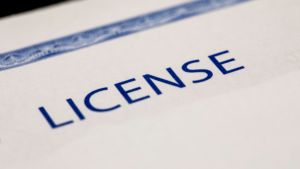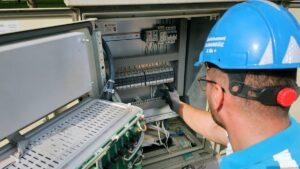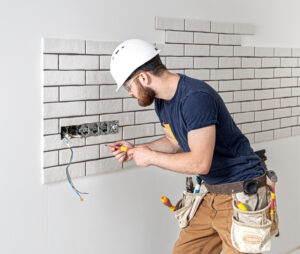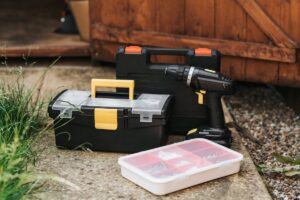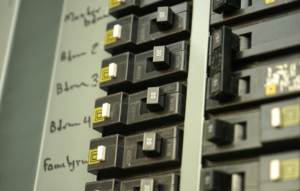Choosing the right power strip and extension cord for your needs is crucial for ensuring safety, efficiency, and convenience in your home or workplace. With various types and features available, it can be challenging to know which products best suit your requirements. This comprehensive guide will walk you through everything you need to consider when selecting power strips and extension cords, including safety tips, types, features, and practical advice.
Understanding the Basics
Power Strips and Extension Cords: What’s the Difference?
- Power Strips: A power strip is a device that plugs into a wall outlet and allows multiple electrical devices to be powered from a single socket. They often include built-in circuit breakers for overload protection.
- Extension Cords: An extension cord is a length of flexible electrical cable with a plug on one end and one or more sockets on the other end. They are used to extend the reach of an electrical outlet.
When to Use Power Strips vs. Extension Cords
- Power Strips: Ideal for providing multiple outlets in a single location, such as behind a TV or computer desk.
- Extension Cords: Best for temporarily extending the reach of an outlet to a device located further away.
Key Factors to Consider
-
Electrical Load Capacity
Each power strip and extension cord has a maximum load capacity measured in amps or watts. It’s crucial to ensure that the combined load of all devices plugged into the strip or cord does not exceed this limit.
- Calculating Electrical Load: Add up the wattage of all devices to be connected. For example, if you have a computer (300W), a monitor (100W), and a printer (50W), the total load is 450W. Ensure the power strip or extension cord can handle this load.
-
Length and Placement
- Extension Cords: Choose a length that suits your needs but avoid excessively long cords as they can cause voltage drops and overheating.
- Power Strips: Consider where you will place the power strip. Some come with mounting options for walls or desks.
-
Number of Outlets
Determine the number of devices you need to plug in and choose a power strip with enough outlets. It’s always good to have a few extra outlets for future needs.
-
Safety Features
- Surge Protection: Essential for protecting sensitive electronics from voltage spikes. Look for power strips with built-in surge protectors.
- Circuit Breakers: Automatically shut off power in case of an overload, preventing potential fires.
- Ground Fault Circuit Interrupters (GFCIs): Crucial for use in areas prone to moisture, such as kitchens and bathrooms.
-
Plug Type and Cord Gauge
- Plug Type: Ensure the plug type matches your outlet. Some power strips have angled or flat plugs for better fit in tight spaces.
- Cord Gauge: The thickness of the cord, measured in AWG (American Wire Gauge). Lower numbers indicate thicker wires, which can handle more current. For heavy-duty use, look for cords with a lower gauge (e.g., 14 AWG).
-
Additional Features
- USB Ports: Convenient for charging phones and tablets without needing extra adapters.
- Smart Technology: Some power strips come with smart features like Wi-Fi control, energy monitoring, and integration with smart home systems.
- Timer and Automation: Useful for turning devices on and off at specific times.
Choosing the Right Power Strip
-
Basic Power Strips
- Use Case: Ideal for everyday use with low-power devices such as lamps, clocks, and small electronics.
- Features: Multiple outlets, basic overload protection.
- Example: A simple 6-outlet power strip with a built-in circuit breaker.
-
Surge Protector Power Strips
- Use Case: Essential for protecting computers, TVs, and other sensitive electronics from power surges.
- Features: Surge protection, energy rating (measured in joules), indicator lights.
- Example: A 8-outlet surge protector with a 3000 joule rating and USB ports.
-
Heavy-Duty Power Strips
- Use Case: Suitable for workshops, garages, and areas with high-power tools and equipment.
- Features: Higher load capacity, durable construction, longer cords.
- Example: A 12-outlet industrial power strip with a metal casing and 14 AWG cord.
-
Smart Power Strips
- Use Case: Ideal for tech-savvy users who want to integrate their power management into a smart home system.
- Features: Wi-Fi control, app integration, energy monitoring.
- Example: A smart power strip with voice control compatibility and energy monitoring capabilities.
Choosing the Right Extension Cord
-
Indoor Extension Cords
- Use Case: Best for indoor use with low to moderate power devices like lamps, chargers, and small appliances.
- Features: Light-duty cords, typically 16-18 AWG.
- Example: A 6-foot 16 AWG indoor extension cord with three outlets.
-
Outdoor Extension Cords
- Use Case: Designed for outdoor use, capable of withstanding weather conditions and powering garden tools, outdoor lighting, and more.
- Features: Heavy-duty construction, weather-resistant coating, typically 12-14 AWG.
- Example: A 25-foot 14 AWG outdoor extension cord with a weather-resistant jacket.
-
Heavy-Duty Extension Cords
- Use Case: Suitable for high-power devices and tools, such as air compressors, power drills, and other heavy machinery.
- Features: Thick gauge (10-12 AWG), durable construction, higher load capacity.
- Example: A 50-foot 12 AWG heavy-duty extension cord with reinforced ends.
-
Specialty Extension Cords
- Use Case: Designed for specific applications, such as RVs, generators, or construction sites.
- Features: Specialty plugs, higher gauge wires, additional safety features.
- Example: A 30-amp RV extension cord with a 10 AWG wire and molded connectors.
Safety Tips for Using Power Strips and Extension Cords
-
Avoid Overloading
: Always check the load capacity and avoid plugging too many high-wattage devices into a single strip or cord.
- Regular Inspections: Periodically inspect cords and strips for damage, fraying, or exposed wires. Replace them if any damage is found.
- Proper Placement: Keep cords and strips away from heat sources, water, and areas where they can be pinched or tripped over.
- Follow Manufacturer Instructions: Always adhere to the guidelines provided by the manufacturer regarding the use and limitations of the product.
- Unplug When Not in Use: Disconnect power strips and cords when not in use to reduce the risk of electrical fires.
Ensuring Electrical Safety with the Right Power Strip and Extension Cord
Choosing the right power strip and extension cord is vital for ensuring electrical safety and efficiency in your home or workplace. By considering factors such as load capacity, length, number of outlets, safety features, and specific use cases, you can select the best products to meet your needs. Remember to prioritize safety by avoiding overloading, regularly inspecting your equipment, and following manufacturer guidelines. With the right knowledge and tools, you can effectively manage your power needs and keep your electrical systems running smoothly.


